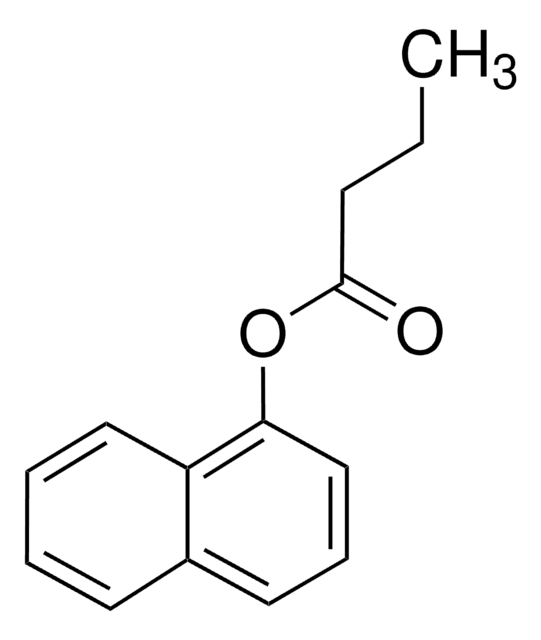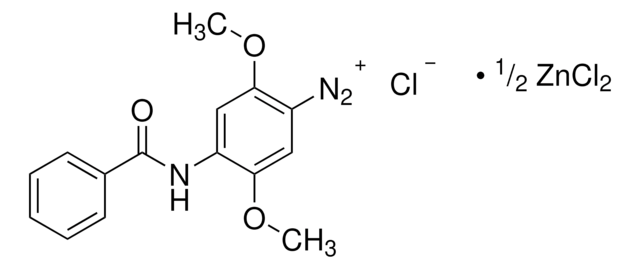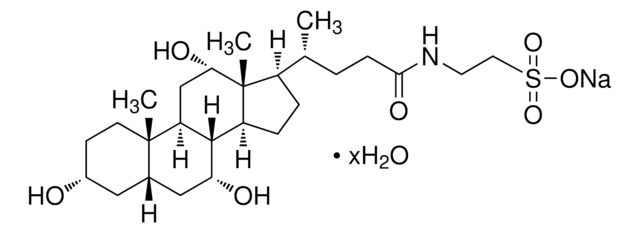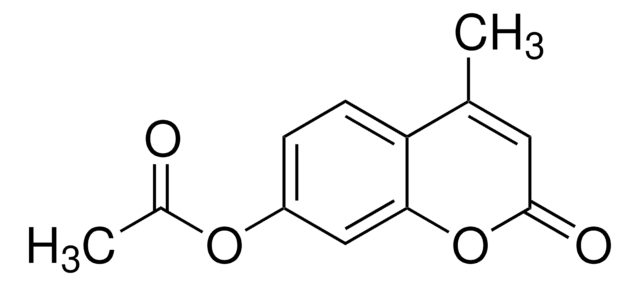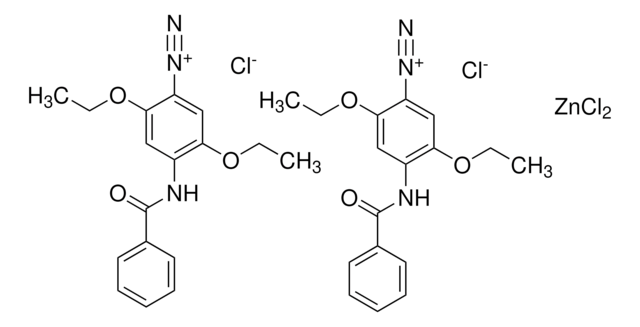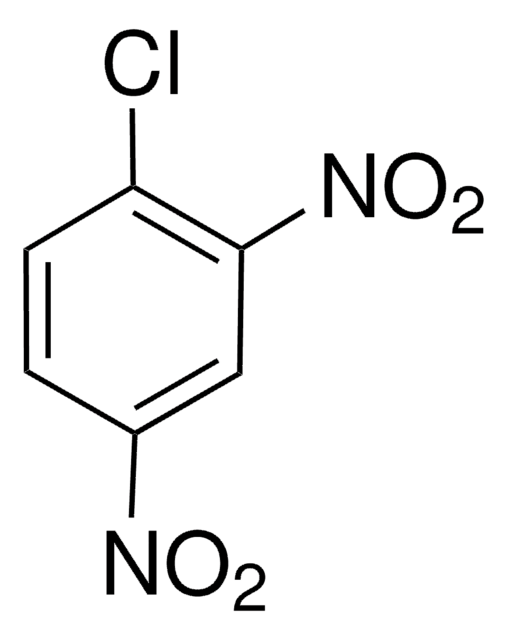Wszystkie zdjęcia(1)
Kluczowe dokumenty
N6875
2-Naphthyl acetate
Synonim(y):
β-Naphthyl acetate
Zaloguj sięWyświetlanie cen organizacyjnych i kontraktowych
About This Item
Wzór liniowy:
CH3CO2C10H7
Numer CAS:
Masa cząsteczkowa:
186.21
Beilstein:
1868291
Numer WE:
Numer MDL:
Kod UNSPSC:
12352204
Identyfikator substancji w PubChem:
NACRES:
NA.32
Polecane produkty
Formularz
powder
Poziom jakości
zanieczyszczenia
<0.2% Free naphthol
mp
67-70 °C (lit.)
rozpuszczalność
ethanol: 50 mg/mL
temp. przechowywania
−20°C
ciąg SMILES
CC(=O)Oc1ccc2ccccc2c1
InChI
1S/C12H10O2/c1-9(13)14-12-7-6-10-4-2-3-5-11(10)8-12/h2-8H,1H3
Klucz InChI
RJNPPEUAJCEUPV-UHFFFAOYSA-N
Szukasz podobnych produktów? Odwiedź Przewodnik dotyczący porównywania produktów
Zastosowanie
Jako substratu użyto octanu 2-naftylu:
- w elektroforezie w żelu dodecylosiarczanu sodu i poliakryloamidu (SDS-PAGE) w celu zbadania składu lipaz w larwach i osobnikach dorosłych
- w przygotowaniu zymogramów do identyfikacji białek o aktywności lipazy
- do pomiaru niespecyficznej aktywności esterazy i aktywności enzymu β-esterazy
Działania biochem./fizjol.
Octan 2-naftylu/β-naftylu (BNA) jest substratem estrowym. Może być stosowany do barwienia żeli w celu wykrycia aktywności esterazy. BNA rozpuszczony w acetonie i etanolu wytwarza odpowiednio ciemne i bardzo jasne/brak tła. W związku z tym odbarwianie nie jest konieczne, jeśli etanol jest używany do rozpuszczania BNA do barwienia żeli esterazą.
Ta strona może zawierać tekst przetłumaczony maszynowo.
Hasło ostrzegawcze
Danger
Zwroty wskazujące rodzaj zagrożenia
Zwroty wskazujące środki ostrożności
Klasyfikacja zagrożeń
Eye Dam. 1
Kod klasy składowania
11 - Combustible Solids
Klasa zagrożenia wodnego (WGK)
WGK 3
Temperatura zapłonu (°F)
Not applicable
Temperatura zapłonu (°C)
Not applicable
Środki ochrony indywidualnej
dust mask type N95 (US), Eyeshields, Gloves
Wybierz jedną z najnowszych wersji:
Masz już ten produkt?
Dokumenty związane z niedawno zakupionymi produktami zostały zamieszczone w Bibliotece dokumentów.
Klienci oglądali również te produkty
Marina Lidwine Olé Sangba et al.
Parasites & vectors, 10(1), 23-23 (2017-01-15)
Knowledge of insecticide resistance status in the main malaria vectors is an essential component of effective malaria vector control. This study presents the first evaluation of the status of insecticide resistance in Anopheles gambiae populations from Bangui, the Central African
Sofía Otero et al.
Aquatic toxicology (Amsterdam, Netherlands), 180, 186-195 (2016-10-11)
Organophosphate insecticides (OPs) continue to be an important class of agrochemicals used in modern agriculture worldwide. Even though these pesticides persist in the environment for a relatively short time, they show a high acute toxicity that may represent a serious
Yu Cheng Zhu et al.
Pesticide biochemistry and physiology, 122, 15-21 (2015-06-15)
Fall armyworm (FAW) is a damaging pest of many economic crops. Long-term use of chemical control prompted resistance development to many insecticide classes. Many populations were found to be significantly less susceptible to major Bt toxins expressed in transgenic crops.
Aditya Iyer et al.
Biochimica et biophysica acta, 1840(9), 2935-2943 (2014-06-18)
Tagging a luminescent quantum dot (QD) with a biological like enzyme (Enz) creates value-added entities like quantum dot-enzyme bioconjugates (QDEnzBio) that find utility as sensors to detect glucose or beacons to track enzymes in vivo. For such applications, it is
Nasz zespół naukowców ma doświadczenie we wszystkich obszarach badań, w tym w naukach przyrodniczych, materiałoznawstwie, syntezie chemicznej, chromatografii, analityce i wielu innych dziedzinach.
Skontaktuj się z zespołem ds. pomocy technicznej

